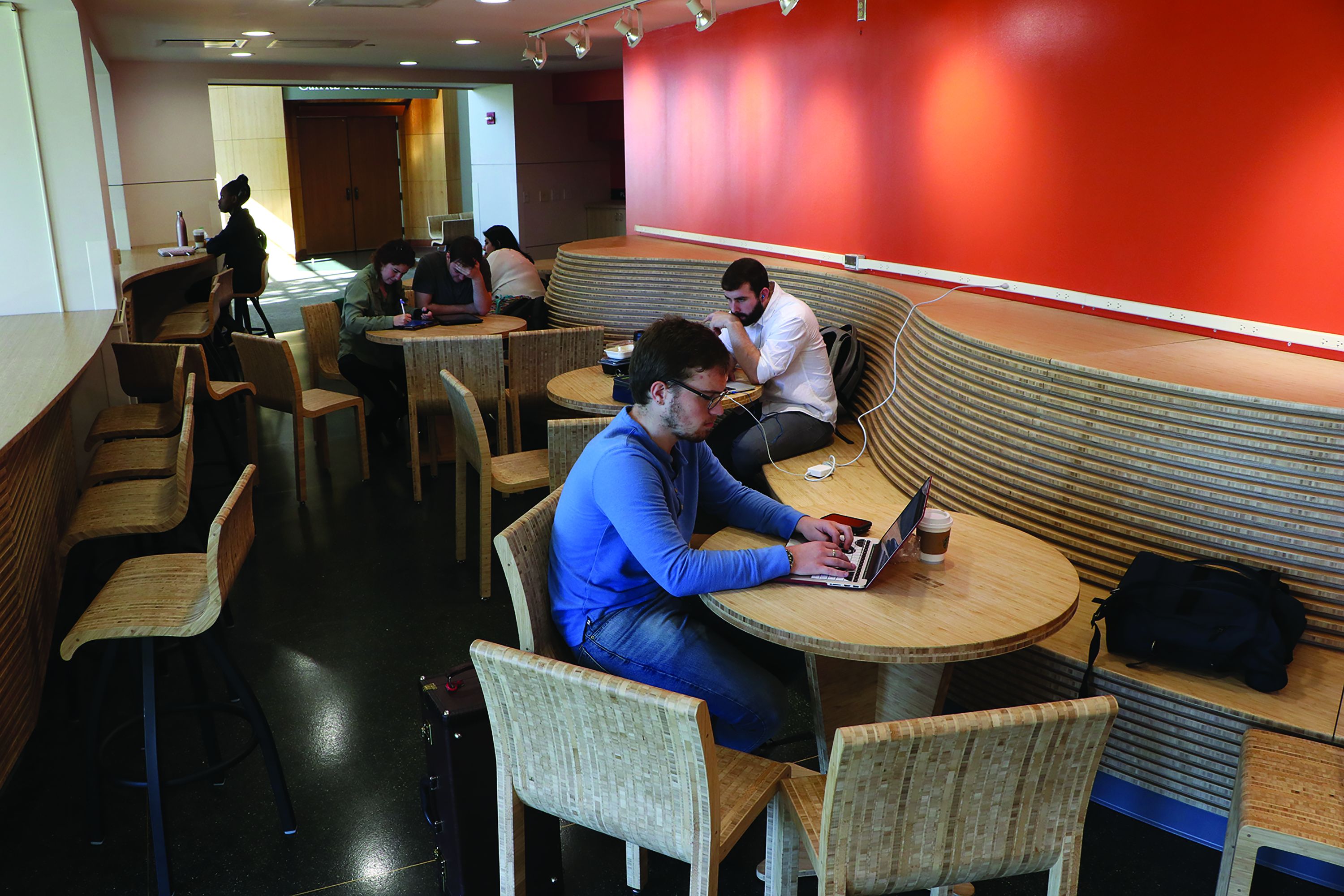People stopping by for a bite at The Clarice Smith Performing Arts Center’s Applause Cafe this semester might sit on sustainable furniture designed by University of Maryland architecture students.
Ten graduate students designed the furniture — which included chairs, a bench, counters and barstools — and built the prototypes in a fall 2016 course before its installation this semester, said Madlen Simon, the architecture professor who taught the class.
The new furniture is all made out of a sustainable bamboo material called Plyboo, Simon said. The class chose this material because it is renewable, meaning it is fast-growing and can be planted and harvested easily, she said.
“We focus on sustainability as a key value in everything we teach,” Simon said. “The built environment is responsible for a tremendous amount of energy use on our planet, and therefore architects have a responsibility to think about our carbon footprint and use renewable materials.”
Simon said they not only designed furniture, which was eventually constructed by an outside manufacturer, but also re-envisioned the cafe’s food service area.
The menu and food service area were revamped in spring 2017. Dining Services helped change the Applause menu to include salads, paninis and hot food options, while the students changed how the food is displayed — it’s now served from colorful, tiled pots, said Erica Bondarev Rapach, The Clarice’s associate executive director.
[Read more: UMD students can now see their peers’ artwork featured in Stamp’s coffee shop]
Before the renovation, the dining food service and the cafe seating area differed aesthetically, creating a distant feeling between the two sections that the students hoped to change.
“One of the reasons the project was actually brought to our attention was because there was a huge disconnect between the two areas,” said Timothy Shook, an architecture graduate student who was in the class.
Kelly Haley, an architecture graduate student who was also in the class, worked on the curvy bench along the wall in the seating area, one of the most complex pieces in the cafe, she said.
The curve element helps guide customers and “bring people together and lead them into the space,” Haley said.
She added that students began working with The Clarice to learn client relations and gain unique, real-life experience as architects, which began with each student presenting their own designs to the performing arts center at the start of the fall 2016 semester.
“From there, we started collaborating, all ten of us, to produce what you see now,” she said.
[Read more: Quantum computers aren’t practical yet — but this UMD-led team wants to change that]
Multiple versions of small-scale models were built by the students and, through the process, they worked with The Clarice to gather feedback on the designs, Simon said. And when they were finished, the class tested the prototypes in Applause to see how people liked the furniture, she added.
“A couple people came along with their cups of coffee and sat down at the tables and chairs and had no idea they were being tested,” Simon said.
During the semester, the class met three times a week for four hours at a time, Haley said. Once they started actually building the furniture prototypes, the students met every weekday, she said.
“Overall, we just wanted a space that was inviting,” Haley said. “Even the color choices that were made are bright and fun, and it’s something that people are going to notice from just walking into the building.”
The Clarice is working on a wooden plaque that will hang in the cafe and list the names of Simon and all the students who worked on the projects, which were jointly funded by The Clarice and Dining Services, Bondarev Rapach said.
“The students were incredibly engaged and interested,” she said. “They were so grateful, and they just loved that they were going through an educational process that had a real application. They were very open to feedback and really committed.”
More often than not, when architecture students design something, “it is never actually made,” Bondarev Rapach said.
“It was really amazing to actually produce something,” Haley said. “We are really excited that our dream is a reality now.”
CORRECTION: Due to a reporting error, a previous version of this story incorrectly stated that the dining food service and cafe seating area are on different floors. They are on the same floor. This story has been updated.



